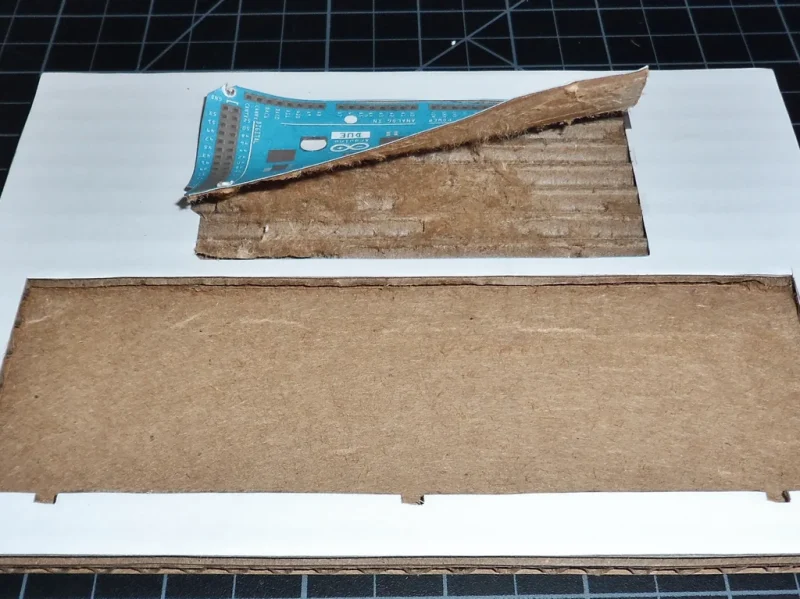Arduino & Breadboard Holder
If you ever played with the Arduino you would know that it can get rather messy, especially if you’re using lots of wires and so lately I’ve been working on a project involving an Arduino and it got to the point when I had to do something about it.
And so here is what I came up with, an easy quick and cheap way to make your very own customizable Arduino and breadboard holder. Also I know you could just buy one, but where is the fun in that 😀
Materials And Tools
- single wall cardboard sheet (cardboard box)
- template
- glue stick
- 4 standoffs + screws (from an old computer)
- insulating tape
- glue gun
- craft knife
- lighter
Step 1: Gluing & Cutting
I started this project by cutting the cardboard box into more manageable pieces and attached the printed template (PDF included in intro) horizontally onto one of them with a glue stick. To make the holder stronger, I glued another piece of of cardboard vertically to the underside.
Once the glue had a chance to dry I cut around the outside lines with a craft knife.
Step 2: Housing for Breadboard
Next I needed to make a slot for the breadboard. For this I carefully cut around the breadboard template, making sure the knife didn’t go all the way through the cardboard but only about halfway. After that I stripped down the layers from the top piece of cardboard to create the slot for the breadboard.
Once the slot was ready I grabbed the breadboard, aligned it with the slot and made sure the little side legs matched the template. Since not all breadboards seem to have the legs at exactly same place and I cut out openings for them.
Step 4: Standoffs
For attaching the standoffs to the holder I squeezed a bit of the hot glue into the pre-drilled holes and quickly popped in the standoffs before the glue cooled down. Once the glue settled I put more of the glue around the Arduino slot and extra around the standoffs for better stability.
Step 5: Hide the Cardboard
To make the holder prettier and hide the cardboard sides I applied insulation tape around the sides of the holder. Once done I folded the tape over the top and the bottom of the holder, briefly applied a lighter flame over the tape and pressed down with my fingers. This will make the tape stick better and get rid of the crinkles that would be left around the corners otherwise.
The only thing left to do now is to screw in the Arduino and pop in the breadboard and that’s it Happy Coding! 😉




















